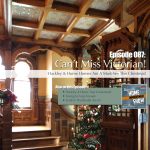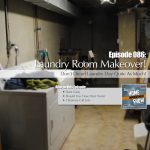OK, now how often is there something we pass every day that we don’t think twice about? For us, the Hackley & Hume Homes were just such a place. We had passed them a number of times and thought they were cool but didn’t give it another thought…until this week.
Forget what you THINK you know about Victorian homes. These surpass that in leaps and bounds. And, right now, they are all decked out for Christmas. We just couldn’t contain our excitement so be prepared!
And, with Christmas coming, we’ve all been busy buying gifts for family and friends. But what about the four-legged friends who don’t have a home? We’ve got Jen Nuernberg and Sarah Shea from the Harbor Humane Society in the studio to talk about their wish list for the furry friends at the shelter. They’ll also tell us if it’s ok to buy a pet as a Christmas present.
And, if you’re looking for something to do this weekend, they have their annual Holiday Open House from 11-4 this Saturday, December 8. You can tour the shelter, decorate doggie “cookies” and get photos with Santa! Check out more details on Instagram!
And finally, we’ve talked about Scuff-X before but it just seems to be one of those products that people can never hear enough about. We’ve posted the videos as proof, but now we’ve got a local company who’s used it for a year. Did it do what we said? Are they still happy customers? We’ll tell you in our last segment.
Listen here:
NOTES:
Hackley & Hume Holiday Tours
- December 8 4-8pm
- December 15 4-8pm
- December 27 4-8pm
- December 28 1-4pm
Harbor Humane Society
The Harbor Humane Society also has a great program called Reading With Fido. Research shows that dogs who are read to in a shelter calm more quickly and become better with humans. Here is a quick video that Sarah took of some young kids reading to “Fido.”




